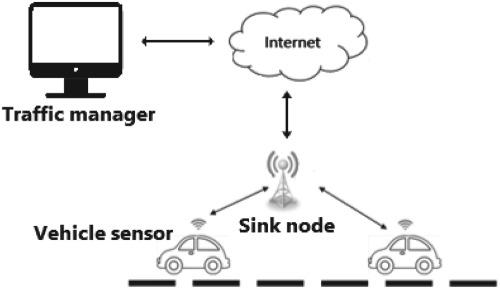当前位置:
X-MOL 学术
›
Int. J. Commun. Syst.
›
论文详情
Our official English website, www.x-mol.net, welcomes your
feedback! (Note: you will need to create a separate account there.)
A lightweight anonymous two‐factor authentication protocol for wireless sensor networks in Internet of Vehicles
International Journal of Communication Systems ( IF 1.7 ) Pub Date : 2020-07-09 , DOI: 10.1002/dac.4511 Mohammad Javad Sadri 1 , Maryam Rajabzadeh Asaar 1
International Journal of Communication Systems ( IF 1.7 ) Pub Date : 2020-07-09 , DOI: 10.1002/dac.4511 Mohammad Javad Sadri 1 , Maryam Rajabzadeh Asaar 1
Affiliation

|
Internet of Vehicles (IoV), as the next generation of transportation systems, tries to make highway and public transportation more secure than used to be. In this system, users use public channels for their communication so they can be the victims of passive or active attacks. Therefore, a secure authentication protocol is essential for IoV; consequently, many protocols are presented to provide secure authentication for IoV. In 2018, Yu et al proposed a secure authentication protocol for WSNs in vehicular communications and claimed that their protocol could satisfy all crucial security features of a secure authentication protocol. Unfortunately, we found that their protocol is susceptible to sensor capture attack, user traceability attack, user impersonation attack, and offline sink node's secret key guessing attack. In this paper, we propose a new authentication protocol for IoV which can solve the weaknesses of Yu et al's protocol. Our protocol not only provides anonymous user registration phase and revocation smart card phase but also uses the biometric template in place of the password. We use both Burrow‐Abadi‐Needham (BAN) logic and real‐or‐random (ROR) model to present the formal analysis of our protocol. Finally, we compare our protocol with other existing related protocols in terms of security features and computation overhead. The results prove that our protocol can provide more security features and it is usable for IoV system.
中文翻译:

车联网中用于无线传感器网络的轻量级匿名双因素身份验证协议
车联网(IoV)作为下一代交通系统,试图使高速公路和公共交通比以前更加安全。在此系统中,用户使用公共渠道进行通信,因此他们可能成为被动或主动攻击的受害者。因此,安全认证协议对于IoV是必不可少的。因此,提出了许多协议来为IoV提供安全认证。Yu等人在2018年提出了一种用于车辆通信中WSN的安全身份验证协议,并声称其协议可以满足安全身份验证协议的所有关键安全功能。不幸的是,我们发现他们的协议容易受到传感器捕获攻击,用户可追踪性攻击,用户模拟攻击以及脱机接收器节点的密钥猜测攻击的影响。在本文中,我们提出了一种新的IoV身份验证协议,可以解决Yu等人协议的弱点。我们的协议不仅提供匿名用户注册阶段和吊销智能卡阶段,而且还使用生物识别模板代替密码。我们同时使用Burrow-Abadi-Needham(BAN)逻辑和实时或随机(ROR)模型来对协议进行形式化分析。最后,我们在安全功能和计算开销方面将我们的协议与其他现有相关协议进行了比较。结果证明我们的协议可以提供更多的安全功能,可用于IoV系统。我们的协议不仅提供匿名用户注册阶段和吊销智能卡阶段,而且还使用生物识别模板代替密码。我们同时使用Burrow-Abadi-Needham(BAN)逻辑和实时或随机(ROR)模型来对协议进行形式化分析。最后,我们在安全功能和计算开销方面将我们的协议与其他现有相关协议进行了比较。结果证明我们的协议可以提供更多的安全功能,可用于IoV系统。我们的协议不仅提供匿名用户注册阶段和吊销智能卡阶段,而且还使用生物识别模板代替密码。我们同时使用Burrow-Abadi-Needham(BAN)逻辑和实时或随机(ROR)模型来对协议进行形式化分析。最后,我们在安全功能和计算开销方面将我们的协议与其他现有相关协议进行了比较。结果证明我们的协议可以提供更多的安全功能,可用于IoV系统。
更新日期:2020-07-09
中文翻译:

车联网中用于无线传感器网络的轻量级匿名双因素身份验证协议
车联网(IoV)作为下一代交通系统,试图使高速公路和公共交通比以前更加安全。在此系统中,用户使用公共渠道进行通信,因此他们可能成为被动或主动攻击的受害者。因此,安全认证协议对于IoV是必不可少的。因此,提出了许多协议来为IoV提供安全认证。Yu等人在2018年提出了一种用于车辆通信中WSN的安全身份验证协议,并声称其协议可以满足安全身份验证协议的所有关键安全功能。不幸的是,我们发现他们的协议容易受到传感器捕获攻击,用户可追踪性攻击,用户模拟攻击以及脱机接收器节点的密钥猜测攻击的影响。在本文中,我们提出了一种新的IoV身份验证协议,可以解决Yu等人协议的弱点。我们的协议不仅提供匿名用户注册阶段和吊销智能卡阶段,而且还使用生物识别模板代替密码。我们同时使用Burrow-Abadi-Needham(BAN)逻辑和实时或随机(ROR)模型来对协议进行形式化分析。最后,我们在安全功能和计算开销方面将我们的协议与其他现有相关协议进行了比较。结果证明我们的协议可以提供更多的安全功能,可用于IoV系统。我们的协议不仅提供匿名用户注册阶段和吊销智能卡阶段,而且还使用生物识别模板代替密码。我们同时使用Burrow-Abadi-Needham(BAN)逻辑和实时或随机(ROR)模型来对协议进行形式化分析。最后,我们在安全功能和计算开销方面将我们的协议与其他现有相关协议进行了比较。结果证明我们的协议可以提供更多的安全功能,可用于IoV系统。我们的协议不仅提供匿名用户注册阶段和吊销智能卡阶段,而且还使用生物识别模板代替密码。我们同时使用Burrow-Abadi-Needham(BAN)逻辑和实时或随机(ROR)模型来对协议进行形式化分析。最后,我们在安全功能和计算开销方面将我们的协议与其他现有相关协议进行了比较。结果证明我们的协议可以提供更多的安全功能,可用于IoV系统。











































 京公网安备 11010802027423号
京公网安备 11010802027423号